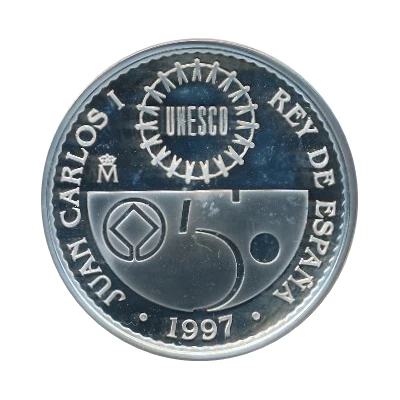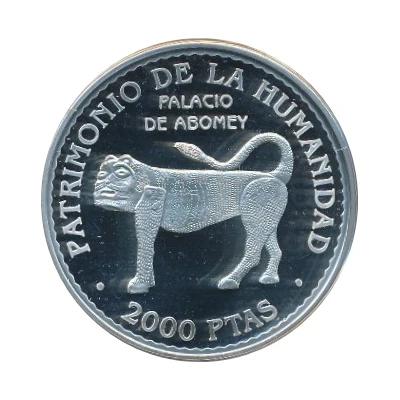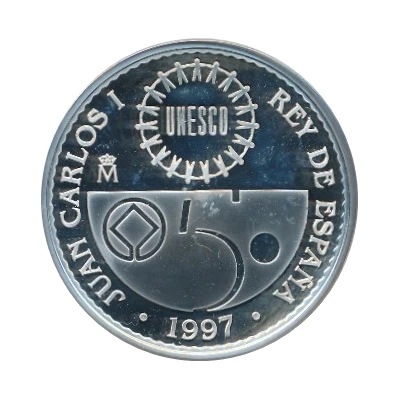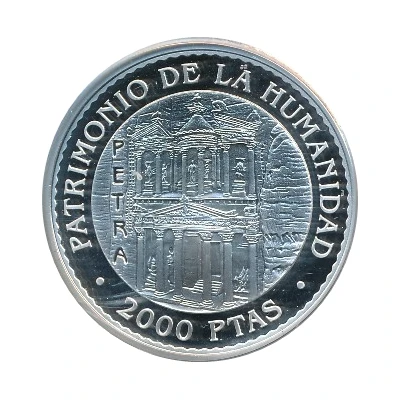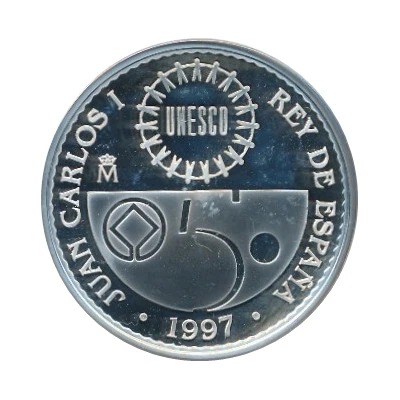
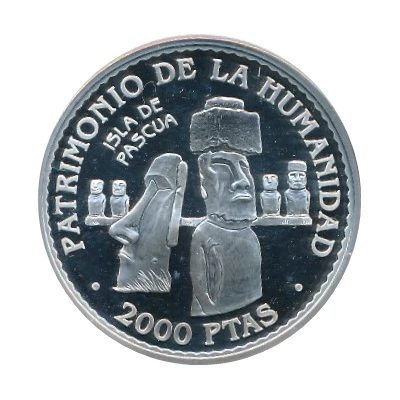

2000 Pesetas - Juan Carlos I Easter Island
1997 year| Silver (.925) | 27 g | 40 mm |
| Issuer | Spain |
|---|---|
| King | Juan Carlos I (1975-2014) |
| Type | Non-circulating coin |
| Year | 1997 |
| Value | 2000 Pesetas (2000 ESP) |
| Currency | Peseta (1868-2001) |
| Composition | Silver (.925) |
| Weight | 27 g |
| Diameter | 40 mm |
| Thickness | 2 mm |
| Shape | Round |
| Technique | Milled |
| Demonetized | 28 February 2002 |
| Updated | 2024-10-07 |
| Numista | N#102449 |
|---|---|
| Rarity index | 92% |
Reverse
Giant stone busts or “moais” on Easter Island
Script: Latin
Lettering:
PATRIMONIO DE LA HUMANIDAD
ISLA DE PASCUA
· 2000 PTAS ·
Unabridged legend: 2000 Pesetas
Translation:
World Heritage
Easter Island
Engraver: Begoña Castellanos García
Edge
Reeded
Comment
Rapa Nui National Park (Spanish: Parque nacional Rapa Nui) is a national park and UNESCO World Heritage Site located on Easter Island, Chile. Rapa Nui is the Polynesian name of Easter Island; its Spanish name is Isla de Pascua. The island is located in the southeastern Pacific Ocean, at the southeastern extremity of the Polynesian Triangle. The island was taken over by Chile in 1888. Its fame and World Heritage status arise from the 887 extant stone statues known by the name "moai", whose creation is attributed to the early Rapa Nui people who inhabited the island starting between 300 and 1200 AD.
Interesting fact
The 2000 Pesetas - Juan Carlos I (Easter Island) 1997 coin from Spain features a unique design that showcases the famous Moai statues found on Easter Island, which are monolithic human figures carved by the early Rapa Nui people. The coin's design is a nod to the rich cultural heritage of the island and its ancient inhabitants.
Price
| Date | Mintage | VG | F | VF | XF | AU | UNC |
|---|---|---|---|---|---|---|---|
| 1997 M | 30000 | - | - | - | - | - | - |
Values in the table are based on evaluations by sales realized on Internet platforms. They serve as an indication only for 2000 Pesetas - Juan Carlos I (Easter Island) 1997 coin.
